#kmkg
Photo
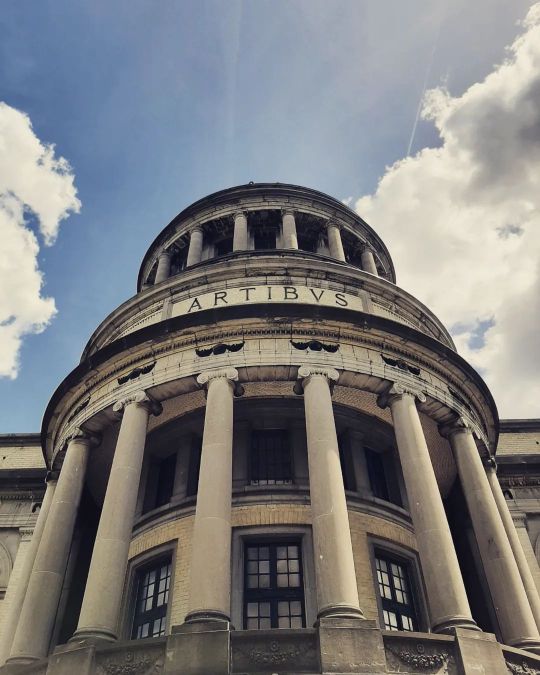
#art #history & #pride - lead the way! #kmkg #royal #museum #brussels #brussels🇧🇪 #bruxelles #bruxelles🇧🇪 #bruxellesmabelle #brussel #gay #gaypride (at Parc du Cinquantenaire) https://www.instagram.com/p/Cd1XXWZoM-UJu41YWUdx39rHyL3O_B2bdNaHGc0/?igshid=NGJjMDIxMWI=
#art#history#pride#kmkg#royal#museum#brussels#brussels🇧🇪#bruxelles#bruxelles🇧🇪#bruxellesmabelle#brussel#gay#gaypride
0 notes
Text
Archaeological things that make me happy
Early medieval Germanic Buckets

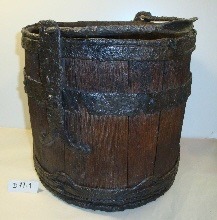

For reasons not really known, the Early Germans attributed an unknown importance to buckets. Both in Anglo Saxon and Merovingian graves can such buckets be found. I’d even call them pretty, and they’re 1500 years old.
1) RMO Leiden, object nr Rh763F, Rhenen-Utrecht, The Netherlands
2) KMKG Brussels, object nr D0077-001, Tienen-Vlaams Brabant, Belgium
3) The British Museum London, object nr 1939,1010.119 , Sutton Hoo - Suffolk, England
#field archaeology#anglos Saxon#germanic#early Germans#Merovingian#Frankish#charlemagne#archaeology#field archaeologist#Sutton hoo
240 notes
·
View notes
Text
Loom weights

Loom weights are almost always found in woman’s graves. They are made in various shapes and sizes, f.e. round, teardrop shaped or triangular.
Made from ceramics, bone or carved stones, loom weights provide tension which enables to weave evenly. Despite there being multiple weights on a loom, they’re never given as grave goods in complete sets.
The possible reason only a few or just one weight is given is perhaps to underline the woman’s talent and skills at weaving.
Textiles in the early medieval era were most often made from wool or flax. Frisia was famous for its high quality wools. This was because of it’s central location, the unique landscape which doesn’t allow to be farmed, but is fertile and high in nutrients for grazing sheep, combined with excellent weaving quality and the selling of semi-finished products. The production and trade of wool enabled the Frisians to grow very wealthy.
Koninklijk Museum voor Kunst en Geschiedenis (KMKG), Brussels (city) - Brussels Capital Region, Belgium
Museum nr. B002118-001
Found in Labuissière (Merbes-Le-Chateauh, Hainaut - Belgium
#frankish#merovingian#viking archaeology#archaeology#carolingian#charlemagne#field archaeology#viking mythology#merovingian archaeology#germanic mythology#norse mythology#anglo saxon#field archaeologist#frisian#odin#viking#vikings#germanic#germanic folklore#germanic archaeology#wodan#anglo saxon archaeology#history#jewelry#norse#card weaving#textile history
36 notes
·
View notes
Text
Compressed Natural Gas (CNG) Buses By TDP Government
The Andhra Pradesh Former Chief Minister Nara Chandrababu Naidu announced plans to convert state-run Andhra Pradesh State Road Transport Corporation (APSRTC) buses to CNG in Hyderabad, Vijayawada, and Visakhapatnam. Dharmendra Pradhan, India's Minister of Petroleum and Natural Gas, unveiled the nation's first long-distance compressed natural gas (CNG) bus as part of a strategic initiative run by Indraprastha Gas Limited (IGL), the country's biggest CNG distributor. With its debut, CNG has become India's preferred fuel for long-distance travel. Along with its Indian partner Advantek Fuel Systems, Agility Fuel Solutions developed, manufactured, constructed, and delivered a composite cylinder-based entire bus fuel system that more than doubles the range of India's CNG buses and includes a specific quick filling module to save filling time. The five buses in the program, each equipped with Agility's technology, have a range of more than 1100 km, while CNG buses in India previously had a maximum capacity of 350 km (217 miles). Shri. Nara Chandrababu Naidu who is largely obsessed with efficiency and technology is also known for his visionary . Under the TDP Government, under the rule of Nara Chandrababu Naidu the state of Andhra Pradesh has gone through the most significant development in the history of the state. The TDP MLAs and TDP Leaders who are working for the people and the limitations of the state government have helped the state government achieve many of the developments and programs that have led to many projects which have allowed the state of Andhra Pradesh now where it is. And every news on this was live on TDP Live Updates.

CNG buses were first introduced by APSRTC at the Vidyadharapuram Depot in Vijayawada City in 2007. 311 vehicles are in service at the Vidyadharapuram, Governorpet-II, and Ibrahimpatnam Depots in Vijayawada, all of which share the responsibility of providing the public with a clean environment. The 191 Metro and 99 City buses, as well as 13 Low Floor Non-A.C. buses, are all now in service. It is a positive sign for these buses that the general population uses them. The fuel efficiency of CNG cars from April 2016 to December 2016 was 4.57 KMKG as opposed to 4.52 KMKG during the same time last year. For the delivery of CNG in Vijayawada, APSRTC has a contract with M/S Bhagyanagar Gas Ltd, a partnership between GAIL and M/S HPCL. The TDP Government which had ruled the state of Andhra Pradesh for more than a decade under the presence of the founder NTR and continued by Nara Chandrababu Naidu. With a vision for the future of the state Shri. Nara Chandrababu Naidu made it possible for the future generations with the help of many Top TDP Leaders and Best TDP MLA Candidates.
The BS-VI Emissions Standards, which take effect on 1 April 2020, signal the start of a transition away from diesel, which formerly accounted for 100% of intercity transport, and towards a gas-based economy. Since CNG is less expensive than diesel, fleet owners may simply and affordably attain BS-VI with buses equipped with roof-top CNG systems from Agility Fuel Solutions. The Top TDP Achievements made by the state government have become TDP Contributions .
0 notes
Photo
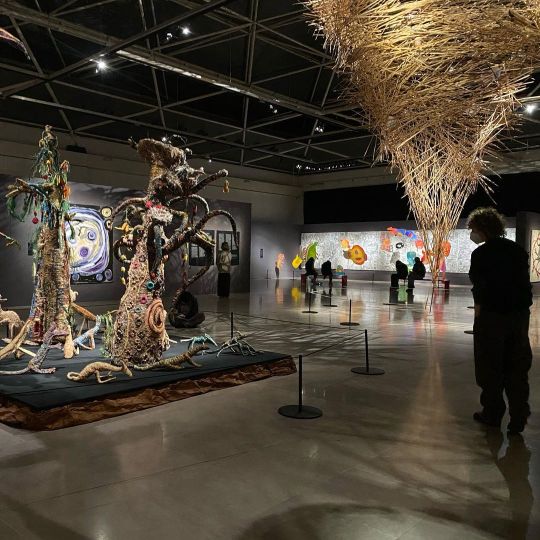
Dag 3: dicht bij huis : het Koninklijk Museum voor Kunst en Geschiedenis #kmkg #aboriginalart #expo #thebeginningoftheworld #artschool #art #artstudent #sintlukaskunsthumaniora #artandhistorymuseumbrussels #artandhistory #australia #modernaboriginalart #kso #brussels https://www.instagram.com/p/CaUcgZwtfZa/?utm_medium=tumblr
#kmkg#aboriginalart#expo#thebeginningoftheworld#artschool#art#artstudent#sintlukaskunsthumaniora#artandhistorymuseumbrussels#artandhistory#australia#modernaboriginalart#kso#brussels
0 notes
Photo

Stela of Haounefer
This stela in limestone, which was part of the Anastasi collection and then of the collection of E. Meester de Ravestein, belongs to Haounefer, a "Government official (idenout?) Of the estate of Amenhotep II (Aa-kheper-Re)".
The monument is divided into two scenes at the top, one notices the owner in an attitude of prayer before the god Osiris; at the bottom, Haounefer and his wife, sitting on seats, receive offerings from their son and their three daughters.
The stela is distinguished by many well preserved colours.
New Kingdom
Reign of Amenhotep II/Amenophis II/Aakheperure
Archaeological site and Provenance unknown
Material: engraved and painted limestone
Height: 30 cm
Width: 25 cm
KMKG - MRAH, Brussels
Inventory number E.5286 See Less
41 notes
·
View notes
Photo
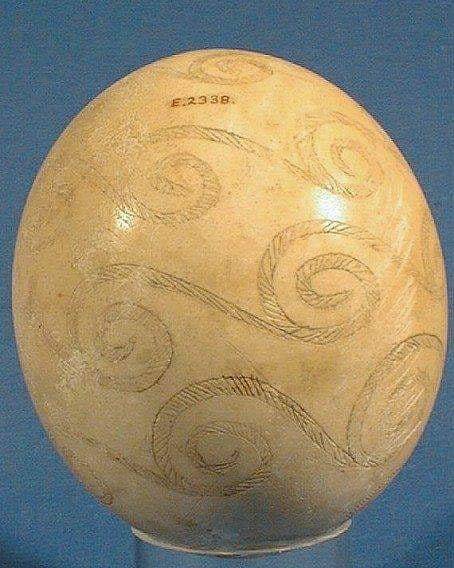
فصح مجيد Happy easter "Eastern calendar" Decorated ostrich egg, 2nd millennium BC Musees Royaux d'Art et d'Histoire, Brussels, Belgium Decorated ostrich eggs date mainly from the second millennium BC, and the majority are decorated with dots and white lines, or black zig-zag lines; eggs bearing incised lines, spirals and even animal outlines are much rarer. The egg in Brussels is decorated with 37 engraved spirals, running from the base to the top of the shell. The purpose of this type of object is unknown. Present location KMKG - MRAH [07/003] BRUSSELS Inventory number E.2338 Dating MIDDLE KINGDOM (not before); NEW KINGDOM Archaeological Site UNKNOWN Category OSTRICH EGG Material SHELL (OSTRICH EGG) Technique ENGRAVED Height 14 cm Width 11 cm #iregipto #egyptpassion #retreat #yoga #inspiration #sphinx #gizapyramids #egg #zigzag #ostrich https://www.instagram.com/p/Bwyt-4ThCnmfRoiCYSzpcdym7eBCeSUA8WR7G40/?utm_source=ig_tumblr_share&igshid=1brh3y1viqg1j
9 notes
·
View notes
Video
#KabMereKehlaoge, My upcoming project on ARY Digital. #kmkg #comingsoon #arydigital #sixsigmaplus #nextlevelproductions #director #umergulzari
0 notes
Text
« MUSICAL THEATRES », À LA « PORTE DE HAL », JUSQU’AU 04 DÉCEMBRE 2022
« MUSICAL THEATRES », À LA « PORTE DE HAL », JUSQU’AU 04 DÉCEMBRE 2022
Affiche de « Magical Theatres » © « KMKG-MRAH »
« Je priais parfois mon fils de me donner une représentation de décors …
Je voyageais ainsi en rêve et j’y aurais passé ma vie,
car à l’âge ou je suis maintenant,
le plus agréable des voyages est celui qu’on peut faire dans un fauteuil.«
(Georges Sand (Amantine Aurore Lucile Dupin de Francueil/1804-1876)/« Œuvres autobiographiques »/T. II).
Comme…

View On WordPress
0 notes
Text
WASTE MANAGEMENT AND CIRCULAR ECONOMY IN FLANDERS - BELGIUM

Picture: Barkcloth tapa, Fiji islands, KMKG Brussels
1. Waste collection and waste management
Waste collection in Flanders is organised by intermunicipal agencies. These are companies with a statute fixed by a decree of the Flemish government of July 6th 2001.Waste collection and management agencies have to be separate from other intermunicipal agencies. Their activity has to be limited to the collection and management of waste.
Intermunicipal agencies for waste collection and management can be pure private or mixed private and public. In the first case the capital has been paid up by all municipalities and towns members of the intermunicipal agency. The contribution of each town/municipality has been calculated according to its size and the size of its population. Intermunicipal agencies are entitled to do all financial operations necessary in the framework of their activity, including taking loans from banks. In the second case, the capital of the Intermunicipal agency has been paid partly by the municipalities, partly by a private partner. This private partner is often a company specialised in waste collection and management that will effectively provide the member municipalities with its services.
In waste collection and management, the income of the intermunicipal agency often comes from 2 sources:
a. it is the municipality that pays the invoices for the collection of the waste through its municipal ecologic taxes it imposes each household with. This tax includes the purchase and use of specialised trucks and the salaries of the waste collectors.
b. it is the citizen who pays the invoices of the waste treatment in 3 possible ways:
1. by buying plastic bags in which he puts his waste for collection by the agency. The agency sells the bags via commercial shops. The price of the bag charged to the citizen contains 3 elements: production price of the bag, fee to the commercial shop for selling the bag, fee to the waste treatment entity for treating that kilogram of waste.
2. by providing waste bins in lease to each household. The waste is put in the bin each collection day and presented by the household to be weighed. The bin is identified through a chip. The household receives a trimestral invoice for the treatment of the collected waste.
Intermunicipal agencies are only entitled to collect and manage waste of private individuals. Companies, shops, restaurants etc have to look for other ways of having their (professional) waste collected and treated. Most of the time they have a contract with a private waste collecting company that also treats the waste. Waste with a risk factor like asbestos or nuclear waste of hospitals has to be treated carefully: its treatment can be very costly.
Waste is collected separately according to the Law of 29/4/1994 of the Flemish region. Separate waste collection is compulsory as well for private individuals as for companies. In practice almost 90% of the waste is collected separately and can be reused.
Private individuals’ waste is collected in 2 ways:
a. collection at the doorstep through trucks of the intermunicipal agencies: 3 to 4 collections: residual waste, PMB (plastic bottles, metal, beverage packaging), paper, sometimes: green waste to compost
b. collection in containers spread over the municipality’s territory: hollow glass and used clothes
c. collection in a container park with entrance tax. Most of the time 1 container park per 10.000 inhabitants. Containers for wood and wooden furniture, small chemical waste such as paint, construction, renovation and demolition waste, garden waste for composting, electronic tools such as mixers, drilling equipment, etc, large electronic devices such as dish washers, washing machines, multimedia equipment, lamps and lighting equipment, large residual waste
d. Collection on demand only by specialised firms: asbestos, gas bottles, oils and fuel, firework, radioactive material, car parts, roofing and other asphalt devices, tree trunks
A third waste collection activity has been installed twenty years ago starting from the principle “the polluter pays”, forcing producers to recover their packaging and even their products. Since producers sell their products mostly through wholesalers and the latter distribute finally through shops and department stores, it was difficult for them to collect and recover their goods and stock them before transport to a re-user. That is why producers from the same sector combined forces and created associations responsible for recovering used stuff. People who buy electric devices and computers, glass bottles, batteries, paper and cardboard packaging, fat of French fries, Styrofoam, paint pots,… pay on the moment of purchasing a contribution in order to pay in advance the recovering of their goods. The associations organise the recovering of these materials: paper and cardboard, batteries, hollow glass, electric and electronic devices etc. As mentioned before, the main area where the collection and stocking takes place is the container park in every municipality. The sector association pay the container parks to collect the used packages and devices and organise its recovering and reuse at their own costs. Companies, shops, restaurants with cardboard packaging or used wine bottles have these collected directly by private collectors. Construction companies have to get rid of the debris in the same way.
2. Circular economy
What is important though, is that there is a market for this waste. Collecting it separately and doing nothing with it, is not a good idea. Therefore, companies specialise in reusing it. And in Northern Europe, a whole industry of reusable products appears. This makes that the associations created to use the funds in order to recover waste and used products, became profitable. The first products that were reusable were vegetables and fruit waste, paper and glass, but also pet bottles, debris and Styrofoam. One started to speak about circular economy, the moment the public became convinced that this was a behaviour to stimulate: use materials and products a second time, sometimes in a repaired way, sometimes with another destination. This attitude promoted the search for new destinations. One of the main researches over the last years is the reuse of plastics. This is not an easy venture, since there are 80.000 different types of plastics in the world. But in Northern Europe, companies start to invest in factories melting and reusing plastics. As soon as the price of this commodity is feasible, the population will accept the additional price to pay. Meanwhile,we know that the circular economy pays off and is a way to make money. Research by McKinsey on behalf of the Ellen MacArthur Foundation shows that companies that work on the basis of circular principles are among the fastest growing in the economy.
Being successful in the circular economy[1]
If I have to name three success factors for circular enterprise, then these are:
1. Reconceive the concept of 'value'
The profit of a product lies no longer solely in producing and selling. Value can be created in many ways around the life of a product, as well for manufacturers, as for users and the environment. Think of maintenance and repair services. Or sell products a second or third time, after refurbishment.
The sole circular application does not necessarily sells. Seduce the customer with e.g. the use of high-quality products without prior investment and without worrying about maintenance, with a product that can be customized and that is always up-to-date, with cost savings.
2. Combine servitization, digital technologies and sustainable product design to introduce winning circular solutions
Traditional price-based sales models are under pressure. Customers have less capital to invest. They do not want to engage in maintenance or repair of infrastructure or devices, but concentrate on their core business. In developed countries, the market is also often saturated. Hence the emphasis shifts from product sales to customer after sales, and from ownership to access.
The potential of service-based business models is enhanced by the explosive use of digital technologies. Remote management via IT applications enables, for example, to limit expensive and labor-intensive service of leased products. Intelligent products indicate when maintenance, repair or replacement is required. Information in real time about the availability of devices also enables shared use at an acceptable transaction cost.
Provided that the manufacturer also designs his products in such a way that they last a long time, that they can easily be upgraded or repaired and reused or recycled as soon as they have returned, he increases the profitability of his product-as-a-service model.
3. Find partners in crime, within & outside your own organization, in order to create circular value together
You do not become circular on your own. Forge a coalition of the willing in your own organization. Moreover, cooperation in the value chain is required. Involve suppliers and customers, distributors and installers, but also logistics service providers and financiers.
Circular economy can be split in two types of usage.
The purpose of this chapter is to provide with small-scale examples of these types of usage. I do not comment anymore on the large scale recycling of glass, paper, debris and pet bottles, since large companies know the methodology of it. I insist mostly upon small scale tentatives, some successful already, some in a very early stage, needing to be subsidized.
a. second hand:
existing material cleaned, repaired and used a second time.
We start to have a lot of second hand (or second life or “vintage”) shops in Flanders. Some of them are called “recycle shops” and are sponsored with public funds when they employ personnel that has difficulties in finding a job on the traditional labour market. The salaries of the coaches are therefore paid by the local authorities, their own salaries are recovered by the sales of their products. Some do it on a commercial basis, such as second hand clothes (“vintage clothes”), second hand jewellery. Because of a rising poverty but also because of a change in mentality with young people, the recycle shops become a hype. They sell: second hand books, second hand toys, second dishes and cutlery, second hand tables, chairs, seats, beds, couches, second hand bicycles etc.
Cases:
Matchmaker between second-hand baby stuff and parents in school
Mic Mac Minuscule is the one-stop-shop birth list with second-hand, pimped and fair stuff for (grand) parents in good expectation. This happens through other parents who no longer need their baby equipment and want to reintroduce them.
Mic Mac Minuscule tries to contribute by stimulating reuse and lowering the threshold to second hand. They also create unique pieces through collaboration with designers. This birth list does not bother future parents, offers quality and this to 50% of the new value.
How does it work?
1.The list of things: During an appointment (typically 4-5 months of pregnancy), Mic Mac Minuscule (via a local freelance employee), together with parents, compiles the list of things they need for their new-born baby.
2. Without searching, without worries: Based on a professional mood board, Mic Mac Minuscule starts the search for the right stuff behind the scenes. In addition, they screen each product for cleanliness, quality and safety.
3. Everything is ready: Baby almost in sight? All items are ready on time (4 weeks before the due date).
4.Click and choose: Parents put the link to the birth list on the birth announcement and let family and friends simply choose a gift online.
5. Do not need something anymore? Has your baby grown out of his first clothing size? Mic Mac Minuscule brings them back into circulation.
Pooling reusable plumbing
Rotor Deconstruction wants to recuperate quality sanitary recently from refurbishments and preparing it for reuse. When refurbishing office spaces, ceramic sanitary ware is disposed of as waste, together with the materials of the interior finish. However, it is often a matter of devices that have been well maintained and are still functioning perfectly. In the new offices almost identical sanitary facilities are replaced. After all, the current sector is not prepared to reinstall the broken out appliances.
Rotor Deconstruction wants to develop a service around the pooling of reusable sanitary facilities. Together with real estate partner Cofinimmo they are looking for a dismantling site as a test case. RotorDC will dismantle the material and prepare it for reuse. The project must check whether this service model is technically and economically feasible.
Subscribe to children's clothing
Children's and maternity clothing has only a very short usage phase within the traditional consumption model. Investing in the purchase of durable and high quality children's and maternity clothes is therefore not economically interesting for young (future) parents. The Brussels company Tale Me therefore designed a subscription formula for a renewable and adapted wardrobe. Depending on the type of subscription, you choose three or five unique items of clothing that you can exchange for new items every two months (children's clothing) or every other month (maternity clothes). Animator Anne Balez designs her own collections, but she also collaborates with other designers. All these pieces are only produced locally in Belgium, France and Portugal.
Exchange your clothes
Everyone likes new clothes, but not always to pay a lot for them. But what does one do with all the clothes that hang in the wardrobe and that we no longer wear? This question created the concept of 'swishing' in England a few years ago, in the US they called it 'swapping'.
Swishing / swapping is shopping and exchanging clothing at the same time. People bring beautiful, clean and presentable clothes that they no longer wear to the event, where others fall in love and give them a second life. Swishing / swapping is therefore also good for the environment.
Swishing / swapping events can be organized by anyone around the world. In Belgium, for example, you can find such initiatives via www.swishing.be.
Repair workshop
In an old incinerator in the North of Helsinki –Uusix- a social economy organization has set up an integral recycling centre. Approximately 300 employees are creative with PCs, bicycles, building material, textiles etc. You can donate material and buy it yourself. Impressive what was / is being realized and how their financing model works.
b. reuse of the material with high added value
In a circular economy, numerous solutions are used to continue to use raw materials and products as high as possible in the economy. They are repaired, shared, have a high second-hand value, are upgradeable, can be easily disassembled and transformed into new products. The chosen materials are recycled or bio-based at birth, and are recyclable or degradable at the end of life.
We give hereby examples of cases that exist in Flanders:
Construction topics:
Recyclable building
On the site of the Termunt Hill, the municipality of Tervuren wants to build a new multifunctional and circular building. The local football club and the youth house will be housed in the building. Other associations or private initiatives can also make use of it. For the construction the municipality uses parts that can be reused later or recycled. After use within a few decades, the building must be able to be disassembled.
Sustainable construction materials from steel slags and CO2
The Stepping stone project to a circular city aims to demonstrate the use of Carbstone products made with local raw materials in the city of Ghent. The innovative Carbstone technology makes sustainable building materials from steel slags and CO2, two waste streams. In this way material cycles are cleverly closed, and that has a positive impact on the environment and on the economy. The City of Ghent project looks at the possible impact on the technical level, but also into the preconditions in terms of logistics, organization, environment and health. Crucial is the cooperation between different links in the local value chain.
The project partners will use the acquired knowledge and experience to strengthen the confidence of entrepreneurs in new technology. This project thus forms a stepping stone towards the further development of the circular economy.
Building materials of excavated soil
BC materials converts earthmoving into circular clay construction materials.
Building requires the extraction of soil as a first step. This is difficult to stock and polluting to transport. In Flanders we dig out 21 million tons per year. Approximately 75% of this is unpolluted, and this soil is 40% non-circularly used in road construction or 60% dumped as waste in quarries.
BC materials connect the chain from soil to circular building material. We convert earthmoving into local building materials such as clay plasters, loam stones and rammed earth. These are CO2-neutral, ensure a healthy indoor climate and contain minimal gray energy. After use it can be given back to the ground or re-converted into building material in an infinitely circular process.
In addition, BC also organizes workshops to transfer knowledge and lower the threshold to the use of locally sourced materials. The workshops are aimed at students and professionals from the construction sector.
Facade bricks click together like blocks
Facadeclick is a dry building system where facing bricks are clicked together like blocks. The Facadeclick system works without glue or mortar, but with innovative connectors that connect the facing bricks. In this way, the facing bricks remain perfectly reusable after their first, second, third ... life.
The Facadeclick system works without glue or mortar. It uses innovative connectors that connect the facing bricks with a simple click. The result is a 3 mm joint and a nice tight façade. The patented components and the simple construction process guarantee a flawless execution. With Facadeclick, façades become a temporary circular storage of building materials.
Extra advantage: no efflorescence anymore
You know them: the dreaded white spots on the façade as a result of salts that remain after evaporation of the building moisture. No matter how well the contractor knows his trade, efflorescences cannot always be avoided and sometimes require a great deal of aftercare. With Facadeclick, efflorescence is a thing of the past because it is a dry building system.
Chipboards from the 'city forest'
Unilin, the company behind Quick-Step, produces panels (chipboards, MDF), roof systems and insulation boards. Today, the chipboard consists of 75 percent recycled wood. An economic choice that also has ecological advantages.
Unilin is one of the largest fiberboard producers in Europe. Initially, the company made its sheets with flax straw - the company was set up by a group of flax farmers who invested together. When flax was no longer sufficient, it switched to so-called thinning wood from the forests, and remains of the wood industry - such as wood in irregular shapes, which is not suitable for the furniture industry.
Later on, residual wood from the packaging industry and the construction sector was also used as raw material to finally focus on the recycling of the so-called "urban forest", wood that has already been used and ends up in the waste stream. Today, Unilin chipboard consists of 75 percent recycled wood. And the share of recycled wood will only increase in the coming years. By comparison, this percentage was zero twenty years ago.
Textile topics
Incorporating circularity into contracts for linen and work clothing in OCMW(Social Assistance Organisation) and Zorgbedrijf (Health care public company) Leuven
Zorgbedrijf Leuven (HEALTH Leuven) and OCMW Leuven want to incorporate circularity into the framework agreement for sustainable rent and maintenance of linen and work clothing. For this they enter into a dialogue with the sector, because no circularity without the cooperation with all partners in the chain. Specifically, this concerns flat linen and the work clothes of the care providers, the cleaners and the people of logistics and technology, and the maintenance of the personal linen of the residents.
The project includes the purchase procedure from the preparatory phase with market inspection, the testing of the legality and the feasibility, the drafting of the specifications, the assessment of applications and tenders and the assessment of the conformity at start-up. Also discussed: the possibility to buy circularly or a circular government purchase.
Old flags become bags
The Hasselt Flagbag creates all kinds of accessories from recycled flags. With the help of a sewing machine, these old flags are transformed into the most diverse utensils. For example, the company is focusing on waste prevention: discarded flags and pennants that would otherwise end up on the waste mountain will get a new lease of life thanks to Flagbag.
'Think global, act local!' The distance that a Flagbag travels from raw material to finished product is limited, certainly in comparison with similar products that you buy elsewhere. The flags are from Hasselt and are processed by local workers in a local workshop. The other parts (zips, linings, handles ...) are also recycled as much as possible from old textiles or purchased from local dealers. A nice extra: flag fabric consists for 100% of almost indestructible polyester.
Fashion with recycled jeans
The brand that Tom Duhoux, a Belgian designer, brings to the market, HNST, is unique: it will produce the first jeans made from fifty percent recycled denim fabric. One hundred percent is impossible because the fibres shorten during the production process. In addition, production takes place entirely on European soil: the yarn is made in a spinning machine in Flanders, the fabric is woven in an Italian weaving factory. The first HNST collection consists of three trousers and a total for women, and three trousers and men's jeans vest.
Food topics
Growing oyster mushrooms on coffee grounds from the city
PermaFungi is a pilot project on urban ecology that wants coffee grounds produced in Brussels reuse to grow delicious oyster mushrooms. The company was founded in March 2013 and recently opened a second nursery.
In the nurseries, oyster mushrooms are grown on so-called 'sausages', which for the most part consist of coffee grounds, which turns out to be an ideal breeding ground for oyster mushrooms. The coffee grounds are collected by bicycle from various branches in Brussels (including coffee bars).
PermaFungi not only focuses on the actual cultivation of mushrooms, but also on the development of self-cultivation kits and workshops.
Land for farmers for local food production
The foundation and the co-operative De Landgenoten (the Landsharers) purchase or manage agricultural land and rent it to organic farmers. They can use it for local food production.
Local food production is an essential part of the circular economy. More and more people from the city are asking. And a lot of farmers are jumping on the cart. They can give a multifunctional and sustainable interpretation to our scarce open space. For example, self-harvest, farmers' markets and cooperation between citizens and local farmers (community-supported agriculture) are on the rise. By providing farmers with public land in a sustainable way, a city can solve its own need for local food supply.
In this project, De Landgenoten want to support both the public landowners and the farmers, give them the right information and provide inspiring examples to find the right match between supply and demand. This is how smart local food production comes on shared grounds.
Potato residues become green energy
What used to be considered waste, can - thanks to new technology - still be useful. The potato-processing company Mydibel, for example, turns its potato energy into green energy [electricity and heat] in its own energy centers. Mydibel runs entirely on green energy. In addition, this process yields an interesting by-product: a biological fertilizer that farmers can use to fertilize their (potato) fields.[2]
Unsold bread becomes beer
Department stores also have a lot of waste. Unsold products whose expiration date has expired must unfortunately be discarded. There are food aid projects, but still a lot of food goes into the dustbin. Bread, for example, accounts for twelve percent of total food waste. That is why Brussels Beer Project came up with the idea of giving the wasted bread a second life and brewing beer with it: Babylone. Delhaize delivers daily fresh bread that was not sold. That bread is turned into flour and packaged. Part of the malt that you need to brew beer is replaced by the processed bread.[3]
Furniture and home decoration
Reusable modular office chairs
BMA Ergonomics sells ergonomic office chairs to companies and individuals. The chairs are modularly constructed: they can be easily cleaned and repaired, or provided with new cushions. That way they last much longer. BMA gives a take-back premium for every discarded Axia® chair and reuses the seats or their parts.
An office chair is discarded on average after ten years. That is unfortunate, because many parts are longer useful. The Axia® office chairs from BMA consist of pure and healthy materials that are 99 percent recyclable. They are constructed in such a way that they can easily be refreshed and restored.
The take-back premium means that BMA will take back any discarded Axia® chair. In exchange, the customer receives a fee or a return premium. If the chair is in good condition, it will be cleaned and resold as a 'second life chair'. If it is no longer usable, the chair is dismantled and the parts are reused in other chairs or recycled.
BMA also goes further by offering maintenance contracts or a contract where the customer only pays for seating comfort. BMA requests a deposit for the metal skeleton and the seat cushions are rented per month. If there is a problem with a chair, BMA resolves it. The seats are checked annually. This way the company relieves its customers.
Design carpet of bicycle tires
The Cyclo of the Belgian company Papilio is a design carpet made from old bicycle tires. These bands are cut out and woven in a traditional way into a carpet. No chemical or other finishing products are used during the production process. Do you find the markings of the previous owner on the tires? They still tell their own story. This sturdy carpet is also perfectly suited for outdoor use.
Fans as new lighting
The young designer Sep Verboom from Antwerp, received the Henry Van de Velde Young Talent Award 2018 of the Government of Flanders for his products 'Rope hope', a carpet of fibres from old ship ropes, and 'Fan', a collection of lamps made from discarded fans and rattan.
Offices as raw material depots
Nnof (Nearly New Offices) is a local manufacturer that develops and produces sustainable office furniture in its own workshops based on existing raw materials provided by the customer. The solutions are good for the environment, budget-friendly, innovative and flexible.
Nnof's range is broad, ranging from simple reuse to a complete transformation of existing objects. Sliders are reborn as lockers, table tops are cut into seat blocks, and so on.
Reusing material in this way is nice to the wallet and it helps to reduce the ecological footprint of office furnishing.
Socio-ecological furniture manufacturing
Recup Design is a socio-ecological furniture manufacturing company that starts with reusable wood that it receives from private individuals, construction companies, stand builders, and so on. Wood that would otherwise end up in the incinerator will thus receive a second life at Recup Design. Scaffolding wood, for example, is transformed into a library cupboard, an old squash floor is transformed into a dining table, a discarded terrace floor becomes a new garden house ... All this is custom-made, completely according to the wishes of the customer.
The employees of Recup Design are mainly people who get few opportunities on the labor market.
Old filing cabinet becomes hip locker
Choosing solid material is usually a good idea. What is solid lasts longer. and therefore needs to be replaced less quickly. But what if you need to change? Many companies are in that situation. At the time they bought large, robust archive cabinets, but due to digitization there is less and less need for storage space. At Pami, a company that designs and realizes office design, they found a solution. "On the one hand, many of our customers had a surplus of [roller shutter] cupboards ·, says marketing manager Christophe van Hees. 'On the other hand, there was a growing demand for individual lockers for employees, because in more and more companies employees no longer have one fixed workplace. The internal R&D department of Pami managed to convert surplus roller shutter boxes into modern lockers. Waste is avoided by reusing surplus roller shutter boxes - even from other brands - and by using residual strips or old worktops to produce shelves and doors of the lockers. This upgrade can simply be done at the customer's site. So less transport and less CO2 emissions.[4]
Recycling of materials
E-waste is (worth) gold
Umicore Precious Metals Refining is one of the largest recycling parks for precious metals in the world. This member of the Umicore Group is a world leader in the recycling of complex waste streams containing noble and other non-ferrous metals. The company regains and sells precious metals (silver, gold, platinum, palladium, rhodium, iridium, ruthenium), but also special metals (indium, selenium, tellurium), secondary metals (antimony, tin, bismuth) and base metals (lead, copper, nickel).
The recycling of these materials is very profitable because the value of metal does not decrease over time. One ton of e-waste accounts for 100 times more gold than what is collected from the mines.
Umicore processes some 100 tons of gold per year and has a recovery rate of almost 95% for metals that are extracted from e-waste.
Purified waste water for agriculture
When companies have shared interests, they can best work together. An example of this is F2AGRI, which makes purified waste water from the food industry available to the agricultural sector. A buffer basin was constructed in Ardooie that is such
150,000 cubic meters of treated waste and rain water from the ARDO factories. The water that comes from the producer of frozen vegetables is made available to local farmers via an underground pipeline network of around 25 kilometers. Farmers who are members of a cooperative can purchase the water at a correct price. The income for the water supplied must cover the expenditure for electricity and maintenance. The system ensures that farmers can also water their crops during dry periods. And that in turn ensures the continuity of delivering the vegetables.[5]
Artists and circular economy
Carmen Björnald, a designer in Milan, Italy and owner of Etsy shop CeeBee Recycle, is an artisan who is able to recycle everyday materials into something new that looks professional and even sophisticated. She makes an eclectic array of useful items from magazine pages, used books and sheet music, as well as fabric from hot air balloons.
The young designer Sep Verboom from Antwerp, received the Henry Van de Velde Young Talent Award 2018 of the Government of Flanders for his products 'Rope hope', a carpet of fibres from old ship ropes, and 'Fan', a collection of lamps made from discarded fans and rattan.
Dave Hakkens in the Netherlands puts simple machines on the market enabling artists to recycle plastic bags and make lovely objects out of it. https://preciousplastic.com/
3. The sharing Economy
One of the aspects of circular economy is the sharing economy. Sharing economies allow individuals and groups to make money from underused assets. In this way, physical assets are shared as services. If we think of libraries or former video rental shops, we are aware that the principle is very old. But thanks to smartphones, it acquires a second life. The sharing economy has evolved over the past few years where it now serves as an all-encompassing term that refers to a host of on-line economic transactions that may even include business to business (B2B) interactions. Other platforms that have joined the sharing economy include:
Co-working Platforms - Companies that provide shared open work spaces for freelancers, entrepreneurs, and work-from-home employees in major metropolitan areas.
Peer-to-Peer Lending Platforms – Companies that allow for individuals to lend money to other individuals at rates cheaper than those offered through traditional credit lending entities.
Fashion Platforms – Sites that allow for individuals to sell or rent their clothes.
Freelancing Platforms – Sites that offer to match freelance workers across a wide spectrum ranging from traditional freelance work to services traditionally reserved to handymen.
Criticism of the sharing economy often involves regulatory uncertainty. Businesses offering rental services are often regulated by federal, state or local authorities; unlicensed individuals offering rental services may not be following these regulations or paying the associated costs, giving them an "unfair" advantage that enables them to charge lower prices. We think here about AirBnB or Uber, as disturbing entities. But it should be considered that, with the appropriate regulation, the sharing economy can be beneficial to important layers in the population because it provides expanded access to products, services and talent beyond one-to-one or singular ownership and makes products more used. In a period where people become worried about exhausting the earth, using existing objects more and not throw them away quickly becomes on important issue.
Louis Delcart, Board Member EAR-AER, www.ear-aer.eu
[1]
This part of the article has been translated from the article “I have something with a circular economy. Do You?” written by Helen Versluys and published on 23-12-2018 in LinkedIn Pulse.
https://www.linkedin.com/pulse/ik-heb-wat-met-circulaire-economie-u-ook-helen-versluys/
[2] Wim Troch: Zij tonen hoe je grondstoffen hergebruikt (They show how to reuse raw materials), in Visie March 2019
[3] Wim Troch: Zij tonen hoe je grondstoffen hergebruikt (They show how to reuse raw materials), in Visie March 2019
[4] Wim Troch: Zij tonen hoe je grondstoffen hergebruikt hergebruikt (They show how to reuse raw materials), in Visie March 2019
[5] Wim Troch: Zij tonen hoe je grondstoffen hergebruikt . (They show how to reuse raw materials), in Visie March 2019
0 notes
Photo

Bastet.
Estatuilla de la diosa Bastet, que originalmente vino de la ciudad de Bubastis en el Delta. Ella se muestra con la cabeza de un gato en el cuerpo de una mujer. Hay agujeros en las orejas erigidas, probablemente para la fijación de pendientes dorados. Los bigotes están indicados en el hocico. La deidad está vestida con un vestido escotado, decorado con un patrón de líneas. Las pulseras son visibles en sus tobillos. En su brazo izquierdo lleva una canasta y sostiene un emblema divino; una aegis con cabeza de león con un disco solar y uraeus en la parte superior. La pieza está desprovista de inscripciones que podrían habernos informado de la identidad del propietario.
Ubicación actual KMKG - MRAH [07/003] BRUSELAS
Numero de inventario E.7671
Citas PERÍODO TARDÍO
Sitio arqueológico DESCONOCIDO
Categoría FIGURINE / STATUETTE
Material BRONCE
Técnica FUNDICIÓN
Altura 9.7 cm
Anchura 3.5 cm
Profundidad 2.5 cm
0 notes
Photo
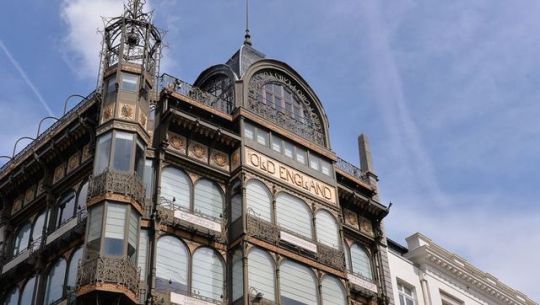
Jongeren bezoeken voortaan gratis de Koninklijke Musea voor Kunst en Geschiedenis
Jongeren tot 19 jaar kunnen vanaf dinsdag 5 september gratis naar de Koninklijke Musea voor Kunst en Geschiedenis (KMKG). De toegangsprijzen voor volwassenen stijgen wel lichtjes.
Een van de redenen is dat het financieel steeds moeilijker wordt voor scholen om culturele uitstappen te organiseren. “Jongeren in contact brengen met kunst, cultuur en wetenschap is cruciaal voor hun ontwikkeling tot mondige burgers”, klinkt het bij het KMKG.
Vanaf 5 september mogen jongeren beneden de 19 jaar, zowel bij een individueel bezoek als in groepsverband, gratis naar de vaste tentoonstelling van de Koninklijke Musea voor Kunst en Geschiedenis. Die bestaan uit het Jubelparkmuseum, het Muziekinstrumentenmuseum, de Hallepoort en de Musea van het Verre Oosten in Laken, die momenteel gesloten zijn voor renovatiewerken. Ook personen met een handicap en hun eventuele begeleider krijgen op vertoon van een kaart gratis toegang tot deze musea.
De maatregel brengt tegelijk wel een prijsverhoging tot de meer marktconforme internationale standaarden mee voor enkele musea. Zo betaalt een volwassen bezoeker in het Jubelparkmuseum en het Muziekinstrumentenmuseum nu 10 in plaats van 8 euro en in het Hallepoort stijgt de toegangsprijs van 5 naar 7 euro
bron: www.hln.be
mening: Ik vind het zeer goed dat jongeren eens gratis naar het museum kunnen. Kunst en cultuur is voor jongeren iets dat ze zeker moeten zien of er iets over kunnen leren. Doordat je voor bijna alles moet betalen is het wel goed dat er een gratische dag is. Ik denk wel dat er veel volk naar toe zal komen. Kunst en cultuur is ook iets dat men graag wil zien of kennen. Intresse daarin is namelijk heel goed.
0 notes
Text
MoMu lanceert handleiding ‘Verbind je termen’
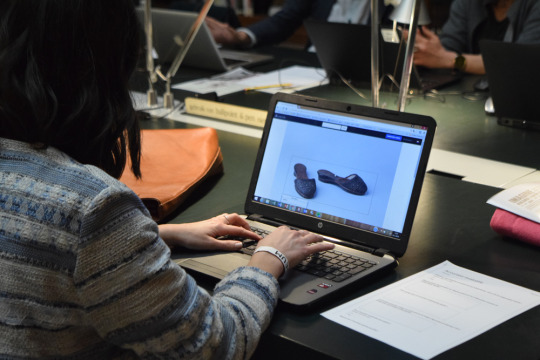
Door: Ykje Wildenborg
Het ModeMuseum Antwerpen (MoMu) lanceert tijdens de Week van het Nederlands ‘Verbind je termen’, een handleiding voor musea over het gebruik van terminologieën vanuit een digitaal perspectief.
De gids beantwoordt aan een behoefte van het brede museale werkveld en komt voort uit een samenwerking tussen Vlaamse en Nederlandse instellingen. Hij staat verankerd in de projectenbank CEST van expertisecentrum PACKED vzw. De onderdelen die aan bod komen begeleiden een museum in het volledige proces van de dataverrijking in gecontroleerde velden: exporteren, opschonen, koppelen en importeren. Uiteindelijke doelstelling: betere zoekresultaten in online gepubliceerde metadata.
De handleiding is te vinden op kennisplatform CEST.
Diverse noden
Hoe kun je het gemakkelijkste koppelingen leggen naar een externe terminologiebron? Wat doe je met trefwoorden, die niet in thesauri terug zijn te vinden? Hoe ga je om met door de jaren heen vervuild geraakte velden in je CMS?
Dat soort vragen komt allemaal aan bod. De handleiding is opgezet voor een divers publiek: zowel voor databeheerders als collectieregistrators, gebruikmakend van verschillende content management-systemen en met uiteenlopende collecties in beheer. Met de kleine en grote bouwstenen kunnen instellingen zelf bepalen hoe ze te werk gaan, afhankelijk van hun noden.

Voor elk systeem van toepassing
Het rapport beschrijft één voorbeeld-linkproces uitgebreid: ‘verbind je Adlib-termen in Fuzzy Lookup aan de AAT’. Het is verder opgebouwd uit addenda, die alternatieve werkwijzen zoals CultuurLINK introduceren of ingaan op het opschonen van data.
In de uitleg wordt vaker uitgegaan van Adlib, een door meer dan 600 musea in Nederland en België gebruikt systeem. De meeste methodes in de gids zijn echter voor elk systeem van toepassing, zo lang er een data-export mogelijk is in CSV of Excel-formaat.
Up-to-date
De handleiding is geschreven door Shannon van Muijden (Zuiderzeemuseum), Inge van Stokkom (Netwerk Oorlogsbronnen) en Ykje Wildenborg (MoMu). Zij werken simultaan aan Netwerk Zuiderzeecollectie, Netwerk Oorlogsbronnen (NOB) en Visuele Thesaurus voor Mode & Kostuums (VTMK). Die samenwerkingen stimuleren het gebruik van links naar terminologieën in de objectregistratie.

Illustraties maken de terminologie compleet. MoMu Antwerpen, Dávid Ring voor Europeana Fashion.
De handleiding beoogt instellingen de kans te bieden om hiermee te experimenteren achter het eigen bureau, buiten de context van een workshop. Door de ondersteuning van onder meer Netwerk Digitaal Erfgoed (NDE) en PACKED vzw is het gelukt een zo up-to-date mogelijk document af te leveren.
Link naar de handleiding:
https://www.projectcest.be/wiki/Publicatie:Verbind_je_termen
Op naar beter vindbare collecties online
Over het project Visuele thesaurus voor Mode & Kostuums (VTMK)
Het project Visuele Thesaurus voor Mode & Kostuums (november 2015 - augustus 2017), getrokken door het ModeMuseum in Antwerpen (MoMu) en geïnspireerd door digitaal erfgoedprojecten als Europeana Fashion en Modemuze.nl, heeft tot doel het gebruik van gedeelde, gecontroleerde, open termenlijsten te motiveren binnen Vlaamse en Nederlandse musea met een collectie mode.

Illustraties maken de terminologie compleet. MoMu Antwerpen, Dávid Ring voor Europeana Fashion.
Om de doelstelling te bereiken is door een consortium van elf musea gewerkt aan de versterking van de Art & Architecture Thesaurus (AAT), waarvoor 144 nieuwe concepten, 62 synoniemen en 34 andere verbeteringen zijn aangeboden – en al deels verwerkt – bij de beherende instelling, het Getty Research Institute (GRI) in Los Angeles. Hierbij is gefocust op de objecttypes en textiele materialen die na vergelijking met de door de partnermusea gehanteerde termen duidelijk ontbraken in de Amerikaanse thesaurus.
Ondertussen zijn die nieuwe termen ook ondergebracht in een thesaurus in eigen beheer, die gebaseerd is op de al bestaande mode-gerelateerde AAT-concepten. Het geheel luistert naar de naam Visuele Thesaurus voor Mode & Kostuums.

Amazonekostuum is één van de termen die door het project werden toegevoegd aan de Art & Architecture Thesaurus (AAT).
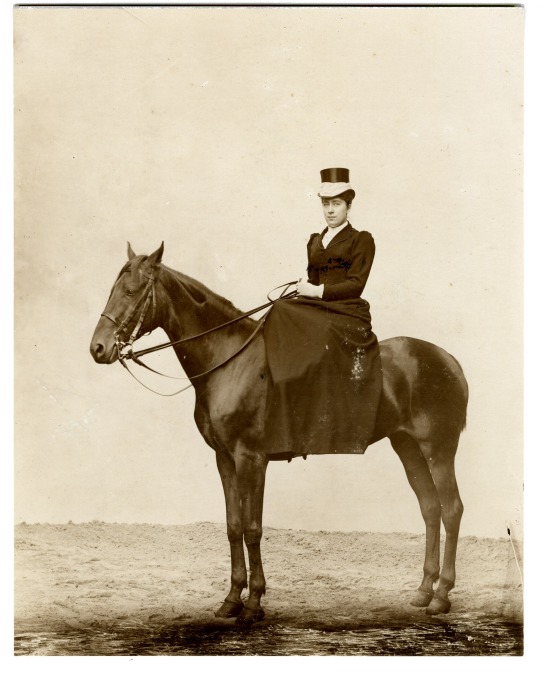
Marie Sax in amazonekostuum, ca. 1890. ©MoMu Antwerpen, Collectie Jacoba de Jonge.
Deze terminologie is als Linked Data (in SKOS-formaat) beschikbaar inclusief links naar illustraties die op Wikimedia Commons zijn ondergebracht. Deze kan nu bijvoorbeeld ingezet worden voor de geïllustreerde doorklikbare thesaurus die al voor het portaal Modemuze werd geschetst. Voor de Linked Data-publicatie, die overigens ook ‘gewone’ gebruikers kunnen consulteren, staat de software Poolparty in – dankzij het Netwerk Digitaal Erfgoed (NDE).
Om de effecten te kunnen tonen aan het werkveld en dit verder bewust te maken van de kansen van Linked Data wordt deze thesaurus momenteel geïmplementeerd in het platform Modemuze.nl. Daarnaast organiseerde het project workshops over het opschonen en linken van collectiedata voor de projectpartners, om deze kennis vervolgens te verankeren in een handleiding voor het brede werkveld (eveneens in samenwerking met NDE).
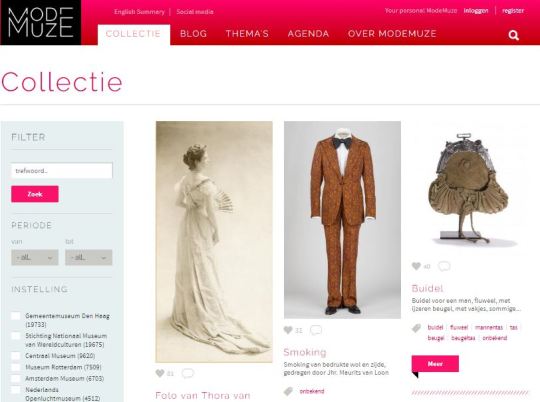
Op het portaal van Modemuze staat inmiddels het mode-erfgoed van vijftien Nederlandse en Vlaamse instellingen.
De stuurgroep
Voor dit project werkte het Antwerpse Modemuseum in de stuurgroep samen met Modemuze, Netwerk Digitaal Erfgoed (NDE), VIAA (Vlaams Instituut voor Archivering) en de Rijksdienst voor het Cultureel Erfgoed (RCE) en werd onder meer ondersteund door Europeana Fashion, Spinque, PACKED vzw, de Universiteit Gent en het Nederlands Instituut voor Kunstgeschiedenis (RKD). De Vlaamse Overheid financierde het project.
Betrokken musea
Amsterdam Museum, Rijksmuseum Amsterdam, Centraal Museum Utrecht, Paleis Het Loo, Fries Museum Leeuwarden, Museum Rotterdam, TextielMuseum Tilburg, Gemeentemuseum Den Haag, Koninklijke Musea voor Kunst & Geschiedenis (KMKG), Koninklijk Instituut voor het Kunstpatrimonium (KIK), Modemuseum Hasselt, Modemuseum Provincie Antwerpen (MoMu).
Internationale publicatie over het project:
http://network.icom.museum/fileadmin/user_upload/minisites/costume/pdf/Milan_2016_Proceedings_-_Wildenborg.pdf
0 notes
Photo
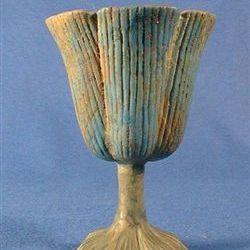
LOTIFORM CHALICE
The lotus flower is an ancient decorative motif in Egyptian art. Even preceding the Old Kingdom cups without bases or feet take on the appearance of a lotus with ivory petals and schist sepals. From the New Kingdom on, the chalice with foot is a common object. Most are made from blue faience, such as this example in Brussels. The top of the chalice takes the form of the flower of a white lotus, indicated by its ribbed petals. The foot, enlarged to improve stability, is decorated with a floral motif. According to mythological texts, the lotus symbolised the flower from which the sun god was reborn each morning on the surface of the water.
Present location KMKG - MRAH [07/003] BRUSSELS Inventory number E.4138 Dating NEW KINGDOM Archaeological Site UNKNOWN Category CHALICE Material POTTERY Technique FORMED BY HAND; PAINTED; ENGRAVED; FAYENCE Height 12.5 cm Diameter 8.8 cm
Bibliography (M. Werbrouck,) Musées Royaux d'Art et d'Histoire, Bruxelles. Département égyptien, Album, Bruxelles 1934, pl. 69 Koninklijke Musea voor Kunst en Geschiedenis te Brussel. Oudheid, het Verre Oosten, Volkenkunde - Musées Royaux d'Art et d'Histoire. Antiquités, Extrême-Orient, Ethnographie, Bruxelles 1958, Égypte nº 24 Egypt’s Golden Age. The Art of Living in the New Kingdom, 1558-1085 B.C. (Exposition), Boston 1982, 147 n° 147 F. Lefebvre et B. Van Rinsveld, L'Égypte. Des Pharaons aux Coptes, Bruxelles 1990, 115
0 notes

